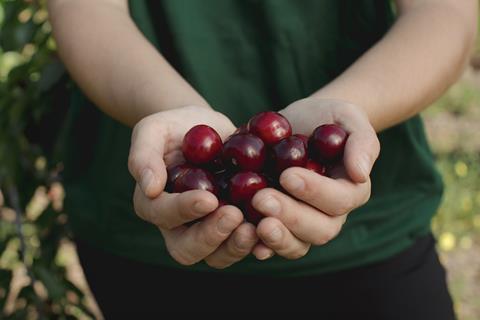Spanish cherry growers are developing new varieties with improved size and extended harvest windows while maintaining the Picota’s distinctive flavour, shelf-life and crunch

Picota producers in Spain’s Jerte Valley are putting a focus on quality, fruit size and new varietal development as they expand their presence in the competitive cherry category.
Picotas are harvested from mid-June onwards, during a time when competition is intense due to an abundance of cherries from a range of origins.
To stay ahead, producers’ organisation Agrupación de Cooperativas del Valle del Jerte is undertaking a genetic improvement programme in collaboration with research partner CICYTEX (Centre For Scientific and Technological Research of Extremadura).
The project is aiming to develop new stalkless varieties with the same desirable characteristics as Picotas – namely enhanced flavour, shelf life and crunch – as well as improving fruit size and extending the harvest window with earlier and later-ripening varieties.
Increasing fruit size is seen as a key area of investment as Picotas are naturally smaller than stalked cherries, and while they are sweeter, more flavourful and longer lasting, consumers buy with their eyes and sometimes perceive bigger fruit to be superior.
Several of the new varieties have already been registered and are now being tested at various altitudes and orientations to assess their long-term adaptability to the Jerte Valley.
The development is part of a wide-ranging commitment to research and innovation at the Agrupación, which has a dedicated technical department providing guidance to producers on how to enhance both yield and fruit quality, with the ultimate goal of improving profitability.
The technical team also conducts annual trials in collaboration with numerous research centres, with findings and insights shared with growers to help them implement best practice and innovation in their orchards.
“This knowledge transfer is a vital tool for ensuring the continuous improvement of production methods across the region,” said Agrupación chief executive Mónica Tierno Díaz.
“Supporting our growers and meeting our customers’ expectations go hand in hand.
”Our broader mission is to ensure that agriculture continues to serve as a social, environmental, and economic driver for this unique and beautiful cherry-growing valley,” she explained.
The commitment to innovation extends to the packhouse too, where producers have embraced optical sorting to assess fruit size and quality and ensure only the best cherries reach export markets.
The group operates one of the largest and most versatile packaging facilities in the Spanish fruit sector, capable of packing in multiple formats including flow packs, heat-sealed trays, carry bags, clamshells and loose.
In other developments, Jerte Valley producers have been increasing production of early and extra-early stalked cherry varieties harvested in May, during a more profitable window in which there are fewer alternatives on the market.
For those cherries that come on stream in the mid-to-late season, growers have put a focus on continuous improvements in quality and differentiation rather than volume.
“Picotas are a unique, naturally stalkless cherry, sweet, crunchy, and with a significantly longer shelf life than stalked varieties,” concluded Tierno Díaz.
“Our goal is to raise awareness of the benefits of choosing this healthy and flavourful snack over others.”



